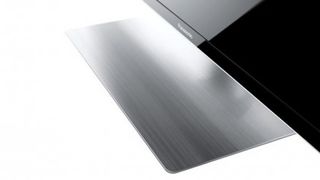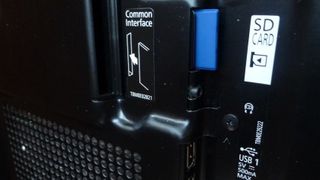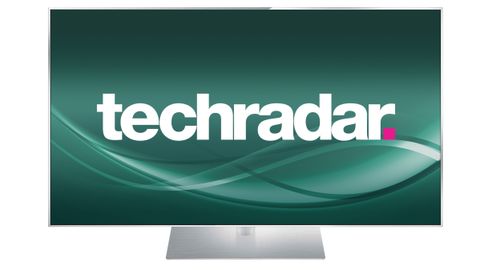TechRadar Verdict
If plasmas disappear amid shrinking sales – and we sure hope they don't – be sure not to shun the TX-P50GT60 in favour of an LED TV. Snap it up – and savor it.
Pros
- +
Excellent blacks
- +
Great colour and contrast
- +
Smooth motion
- +
Speedy interface
Cons
- -
Industrial look
- -
No Lovefilm app
- -
Just three HDMI
Why you can trust TechRadar
Who said plasma was dead? While most brands concentrate on selling us edge LED-lit TVs – even Panasonic – there's nothing like a pricey plasma to remind us of why flat TVs caught on in the first place.
Following in the wake of its barn-storming 'reference' flagship & step-down plasmas, the 60-inch TX-P60ZT65 and 50-inch TX-P50VT65, the much cheaper TX-P50GT60 has a lot to live up to. Or is this the ultimate trickle-down TV?
Last year's outing, the TX-P50GT50, impressed on both its deep black levels and its immaculate 2D and 3D, so we're keen to see if the 2013 version can be crowned as Panasonic's – and likely the industry's – best value plasma.
However, with competition getting fiercer from Samsung in the high-end plasma stakes, albeit in a static market, the TX-P50GT60 can't afford to cut too many corners.
Full HD resolution and active shutter 3D antics go without saying, but the TX-P50GT60 also adds both Freeview HD and Freesat HD tuners.
Also starring here is Infinite Black Pro, something that underlines another of plasma tech's advantages over LED panels.

One area where the TX-P50GT60 is perhaps not at its best is its looks; the bezel measures a whopping 26mm, though in plasma terms that's pretty good. No match for LED tech here, the TX-P50GT60's overall styling – a black bezel rimmed with a recessed metallic strip – will strike you as either elegantly simple or a tad industrial, depending on your preference. The depth hovers between 43mm and 49mm, which, again, is less than most plasmas but more than most LED TVs of a similar price.
Also available
Accompanying this telly in the GT60 series is the 42-inch Panasonic TX-P42GT60 (£950), which is otherwise identical. Step down to the ST6- Series and we find the 42-inch TX-P42ST60B (£900), 50-inch TX-P50ST60B (£950) and 55-inch TX-P55ST60B (£1,300), all of which retain 3D and Infinite Black Pro, but lose the THX modes and general tweak-ability. Two more fatter, HD-ready 2D plasmas, the 42-inch TX-P42X60B (£750) and 50-inch TX-P50X60B (£900), are also available.
Spend bigger and you'll end up with either the 50-inch TX-P50VT65B (£1800), 55-inch TX-P55VT65B (£2,400) or 65-inch TX-P65VT65B (£3,500) in the VT65 Series or the Big Daddy himself, the reference-class 60-inch TX-P60ZT65B (£3,800) plasma.
Features
Inside the TX-P50GT60 is some cracking plasma tech that marks this out as a special screen indeed. It's Full HD, sports ISF and THX Certification (for both 2D and 3D), a Hexa engine that takes charge of Panasonic's neoPlasma panel, an Infinite Black Pro filter and a 300Hz Focused Field Drive.
That latter feature underlines just how confident plasma engineers are of plasma technology's continued advantage over LED TVs when it comes to motion handling; 200Hz still represents the peak performance for an LED TV.

Another improvement for Panasonic plasma tech in 2013 is a new red phosphor in each plasma cell, which should help boost the believability of colours still further.
However, what's bound to catch the eye of anyone trying out the TX-P50GT60 is its new smart TV features. The core page is now not VIERA Connect, but My Home Screen, a customisable array of screens (TV Home Screen, Lifestyle Screen and Info Screen) that can be self-designed, adding, moving and deleting shortcuts to any app or widget available somewhere on the TX-P50GT60.
Remote apps
Also new for 2013 is the Viera Remote 2 app for iOS and Android, which includes second-gen file swapping between a phone and the TX-P50GT60 that this year adds video to the mix; Swipe & Share 2.0.
Apps included on the TX-P50GT60 are presented in a grid below links to the TV's main widgets; Media Player, Media Server, VIERA Link, Web Browser, Main Menu, TV Guide and Live TV.
The grid is led by the BBC iPlayer, with other key apps including Netflix, Skype (though there's no built-in camera – you'll have to buy one from Panasonic), Eurosport Player, YouTube, Daily Motion and iConcerts – along with stacks of minor apps either in the user interface or available for free from the online app store. No Lovefilm, then. It's worth adding the Rovi TV Listings app, which is a big improvement on the TX-P50GT60's rather uneventful and slow electronic programme guide pages.
Connectivity
Connectivity wise, ins and outs are plentiful, but there's a hint to the TX-P50GT60's less-than-flagship position. There are inputs to fuel both the Freesat HD and Freeview HD tuners, as well as RGB D-sub for a PC and ins for component video, Ethernet LAN, composite video and Scart.
On the well-recessed side are three USB inputs, one of which can be used to make recordings from the Freeview HD tuner, plus all three HDMI inputs (we had expected four – and why all on the side?), a Common Interface slot, a SD Card slot and an optical audio output. Headphones are via a jack or Bluetooth.

Some of the always-excellent preset picture settings include Cinema, THX Cinema and THX Bright Room. Advanced settings comprise a full RGB colour management system as well as adaptive gamma control and a panel luminance setting, colour gamut, white balance and gamma levels. An Eco mode is also available that switches off all automatic features such as an ambient light sensor, VIERA Link and standby power save.
Jamie is a freelance tech, travel and space journalist based in the UK. He’s been writing regularly for Techradar since it was launched in 2008 and also writes regularly for Forbes, The Telegraph, the South China Morning Post, Sky & Telescope and the Sky At Night magazine as well as other Future titles T3, Digital Camera World, All About Space and Space.com. He also edits two of his own websites, TravGear.com and WhenIsTheNextEclipse.com that reflect his obsession with travel gear and solar eclipse travel. He is the author of A Stargazing Program For Beginners (Springer, 2015),


